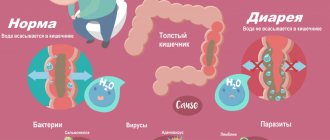What is arsenic and where is it used?
Arsenic, also known as Arsenicum in Latin, is an element of the periodic table, a semimetal. Despite the fact that it is a strong poison for the human body, arsenic also has beneficial properties, which makes it indispensable in various fields:
- agriculture (pesticides),
- deratization and disinfestation (the element is included in many pest control products),
- production of semiconductors and electronics,
- glass industry,
- metallurgy (to impart strength to alloys and increase their anti-corrosion resistance),
- woodworking (for impregnation of wooden products),
- leather and fur industry (as an antiseptic for products),
- medicine (in particular dentistry).
In nature, Arsenicum is present in certain quantities in ore deposits, mountain and earth layers, from where it can be washed out with rain into nearby bodies of water. And when using such water, poisoning is very likely. But this is not the only situation in which arsenic can cause poisoning.
What it is? Description of the element and its physical properties
The periodic table element has an official name (Arsenicum) or arsenic, which means yellow orpiment, and the Russian name most likely refers to the fact that its compounds are used to kill mice and rodents. In the periodic table, the chemical element is located under serial number 33 and is designated As.
The content of the article
- What it is? Description of the element and its physical properties
- The role of arsenic for the human body
- Sources of entry of a chemical element into the body
- Signs of arsenic deficiency in the body and signs of excess
- Symptoms of poisoning
Arsenic is conventionally classified as a chemical element of the group of semimetals, but many scientists believe that it is still rather a non-metal. One of the features that distinguishes this element from similar ones is its extreme density, which significantly affects the physical and chemical properties. Its atom has 3 empty electrons and a valence of 3, which determines its chemical properties.
The semimetal is characterized by a steel color, with a greenish tint, but it can also be yellowish, some varieties are black, although it is rarely found in its pure form, being an accompanying component in lead, copper or silver ores.
The largest deposits where this element is mined are located in Georgia, Central Asia, Kazakhstan, Great Britain, the USA, Canada and other countries of Europe and Asia, in some regions of Russia.
Despite its high level of toxicity, arsenic has many important properties used in both medicine and industry. In its pure form, As is used in the synthesis of semiconductors. Another important method of use in the manufacture of paints: sulfides of this substance are used in the creation of paints both for painting and for leather production. The chemical industry uses arsenic acid, which is formed as a result of the oxidation of the starting material.
Interesting historical data
In the 19th century, rumors spread from the States and some European countries about a miraculous cosmetic medicine called Arsenic; all the ladies were sure that it gave the skin a noble paleness and a lively shine to the eyes.
The dosage of the medication was strictly regulated, starting with small doses and gradually increasing….
The moments of using this substance as a means for losing weight are also described. It was added in tiny doses to weight loss pills. What this ultimately led to, history is silent.
On the Internet I came across a photo of a New York newspaper clipping that gives a recipe for delicious waffles with arsenic.
Ways and methods of poisoning
There are only 3 routes of intoxication: inhalation, ingestion and skin contact. This can happen in different ways:
- in cases of murder or suicide attempts, industrial accidents,
- when living in arsenic-contaminated areas,
- inhalation of poisoned air,
- after eating seafood from contaminated waters,
- from the use of pesticides, preservatives (food), herbicides and products against insects, rodents and fungi,
- after drinking raw water,
- in direct contact with semi-metal in production,
- violation of safety regulations when working with arsenic.
In other words, you can encounter arsenic almost everywhere. But whether a person becomes poisoned or not will depend on the concentration of the poison that enters the body.
Sources of entry of a chemical element into the body
Like other chemical elements, the semimetal enters the body mainly through drinking water and food. In developed countries, the content of this element in water corresponds to the norm; in poor countries, there is a problem of insufficient control of the composition of water, as a result of which local residents en masse become victims of the consequences of poisoning.
The foods richest in arsenic are grape wine and juices, fish and seafood; there is a lot of it in rice, grains and bread, lentils, as well as some vegetables (primarily carrots), berries, and plants.
Thus, the medicinal houseplant money tree or crassula contains this chemical element. Read more by following the link.
Some of the compounds enter the body with medications, fruits and vegetables containing herbicides and pesticides.
Arsenic in dentistry - is it dangerous?
Not so long ago, arsenic paste was used to successfully kill the dental nerve by placing it in the cavity of an exposed diseased tooth. It was assumed that over the next 2 days the poison would reduce sensitivity to zero, the nerve would be removed, and the tooth would be healed.
It would seem that everything is very simple. But there are some nuances here: you can carry arsenic in your mouth for no longer than 2 days. After this time, a visit to the dentist must be made again to remove the paste. Because of this, the question often arises: is it possible to get poisoned by carrying arsenic paste in your mouth?
Oddly enough, many people, afraid to feel pain again, walk with arsenic in their mouth for more days than they should, in order to be sure to “finish off” the nerve. The result here can be one: the poison begins to have a destructive effect on the tooth and soft tissues, which leads to inflammation and rapid destruction of the tooth itself.
Contrary to the existing myth that a filling with arsenic can poison the body, I would like to say that this is not at all the dose of poison that could really lead to intoxication. With arsenic, dental treatment will not lead to poisoning, even if:
Read also: Mold poisoning in humans
- a dental filling containing arsenic fell out and was accidentally swallowed,
- the patient is a child,
- There was an overexposure of the arsenic filling in the mouth.
The minimum amount of arsenic in the composition of the medicinal paste is unable to poison the entire body. But since it can harm the tooth, this substance is rarely used in dentistry. Basically, unless the patient is allergic to modern local anesthetics.
And although arsenic poisoning during dental treatment is impossible, dentists themselves increasingly refuse to use the outdated method of killing the nerve in order to preserve the tooth and its soft tissues. This has been replaced by strong anesthetics that can reduce discomfort to zero, which allows you to painlessly treat the tooth and preserve it for a long time.
How can a person become poisoned by arsenic?
Arsenic intoxication occurs when safety precautions are not followed or storage rules are violated, when the semimetal is mistaken for something else. Suicide attempts and murders using this poison still occur. As a rule, investigators have no difficulty solving a crime - scientists long ago invented a test sample for quickly detecting arsenic in blood and hair.
In addition to intentionally causing harm to yourself or others, there is a possibility of poisoning in the following cases:
- Incineration of garbage and industrial waste.
- When burning a large amount of coal.
- In the process of recycling chemicals.
- When arsenic compounds are washed out by groundwater from ore deposits.
- Use of herbicides, fungicides and plant growth stimulants.
Fish and shellfish are capable of accumulating arsenic from water in their tissues. You should not consume seafood that is caught in bays near large production complexes.
The use of arsenic compounds to destroy the dental nerve is now extremely rare. The dangerous semi-metal is reliably hidden by a temporary filling, preventing its penetration into the body. To prevent poisoning, you should follow your dentist’s recommendations during treatment and do not delay your appointment with the doctor.
Arsenic intoxication is sometimes diagnosed in employees of enterprises that use the semimetal at various stages of technological processes:
- to improve the quality of the resulting metals;
- in the production of conductors and semiconductors;
- for making fireworks;
- when receiving chemical warfare agents;
- for the production of paints and dyeing of leather products.
In some countries, microscopic doses of arsenic are used to treat diseases where one of the symptoms is anemia. The effectiveness of the semimetal in the treatment of bone fragility has been proven. Moreover, bone mass increases after a person stops growing.
Impact on the body
So, it is impossible to be poisoned by this semi-metal during dental treatment. However, if the poison enters the body in other ways and in large quantities, serious harm is caused to health.
A lethal dose of arsenic for an adult can be 0.1 - 0.2 g of poison. Sometimes a negligible dose of 0.05 g is enough for a child.
Under the influence of arsenic (after its rapid absorption into the blood), all organs and their systems are affected. The liver, heart, lungs and kidneys are especially affected, and this happens in just a day. After 2 weeks, the substance is found in bones, nails, hair and skin. Wherein:
- biochemical processes are disrupted,
- the nervous system is affected,
- oxygen exchange in cells is disrupted,
- the substance quickly binds to hemoglobin, etc.
Removal of poison from the body during arsenic poisoning occurs with feces and urine, and with urine much faster. The remnants of the received dose are stored in tissues and organs, continuing to have a detrimental effect.
"Military arsenic."
After the use of chlorine and other poisonous gases during the First World War, chemists in different countries began to develop even more deadly chemical weapons. They, of course, paid a lot of attention to arsenic. In 1918, the American chemist W. J. Lewis, in search of new components for chemical weapons, reacted acetylene with arsenic chloride in the presence of aluminum chloride. As a result, it formed a dark brown liquid with the smell of geranium, which contained b-chlorovinyldichloroarsine as the main component: AsCl3 + C2H2 ® ClCH=CHAsCl2, as well as b,b'-dichlorodivinyldichlorarsine (ClCH=CH)2AsCl2 and b,b' ,b"-trichlorotrivinylarsine (ClCH=CH)3As. This pleasant-smelling mixture, named lewisite after the chemist, had a terrible blister, generally poisonous and irritating effect. Already at a concentration of 0.3 mg/m3, lewisite vapor causes irritation of the upper respiratory tract, and with increasing concentrations it causes damage to the eyes, skin and death. When droplets of lewisite come into contact with the skin, it is quickly absorbed into it, disrupting the course of many biochemical processes and causing severe damage to the body, especially the vascular system. This circumstance at one time gave rise to the Americans calling lewisite “the dew of death.”
Soon other arsenic poisonous substances were synthesized. Among them was a group of irritating substances, its typical representatives being diphenylchloroarsine (C6H5)2AsCl, diphenylcyanoarsine (C6H5)2AsCN, adamsite:
Substances of this group selectively act on the nerve endings of the mucous membranes - mainly the membranes of the upper respiratory tract. This causes the body to reflexively release the irritant by sneezing or coughing. Unlike tear poisonous substances, these substances, even in mild poisoning, act even after the affected person has escaped from the poisoned atmosphere. Within several hours, a person is shaken by a painful cough, pain appears in the chest and head, and tears begin to flow involuntarily. Vomiting, shortness of breath, and a feeling of fear occur; all this leads to complete exhaustion. And in addition, these substances cause general poisoning of the body.
Fortunately, lewisite and other arsenic toxic substances did not have time to be used in the war, but in all countries, including the USSR, lewisite was accumulated in huge quantities - tens of thousands of tons. It is not easy to neutralize it in a safe way. One of the methods is oxidation to low-toxic arsenic acids:
ClCH=CHAsCl2 + H2O2 ® CHAs(O)(OH)2 + 2HCl;
another way is chlorination with the formation of AsCl3, which is used in industry (see ARSENIC).
Symptoms
Signs of arsenic poisoning in acute form are quite characteristic. This specificity helps to identify the problem in time:
- temperature increase,
- thirst, dehydration,
- vomiting with nausea,
- sharp pain of varying intensity in the stomach,
- decreased diuresis,
- weakness,
- loose stools that look like rice water,
- numbness of hands and feet,
- metallic taste in the mouth,
- convulsions,
- partial loss of vision,
- the characteristic smell of garlic from the mouth of a poisoned person,
- heart failure, tachycardia, decreased blood pressure.
Read also: Vodka poisoning in humans
These symptoms of arsenic poisoning indicate an acute form. But with constant contact with this poison (for example, when working in production where Arsenicum is used), the intoxication takes on a chronic form.
Chronic arsenic poisoning will not be immediately noticeable, but it will eventually result in very serious problems due to the growing amount of poison that gradually accumulates in the body:
- the upper layers of the skin grow and become scab-like (hyperkeratosis),
- whitish stripes appear on the nail plates of the hands and feet,
- the skin peels and flakes off even in those parts of the body that have always been protected from contact with poison,
- red spots appear on the head, chest, armpits and scrotum,
- encephalopathy and neuropathy develop,
- convulsions,
- destruction of red blood cells - hemolysis,
- toxic hepatitis,
- burns of the larynx, ulcers of the esophagus, bleeding in the gastrointestinal tract,
- renal failure with blood in urine darkened due to hemolysis,
- coma.
If acute arsenic poisoning is accompanied by symptoms that develop half an hour after taking a dose of poison, then in the chronic form, signs of intoxication can be noticed only after 0.5 - 2 months.
First aid for poisoning
In case of acute arsenic poisoning, first aid should be provided immediately; the first step should be to call an ambulance.
In case of inhalation poisoning, the victim should be removed from the accident area and provided with fresh air.
If arsenic gets inside, the stomach is washed with a 2% suspension of magnesium sulfate or warm water. This procedure should be performed several times to remove the maximum possible amount of toxic substances from the stomach. If the victim is unconscious or arsenic poisoning occurs in a young child, then it is permissible to rinse the stomach only with the help of a gastric tube; this procedure should be performed exclusively by medical workers.
How to help the victim
Although mild poisoning does not require hospital treatment, only a doctor can determine the severity of the problem. Therefore, first of all, you need to call an ambulance, and during its journey, independently help the victim:
- provide fresh air,
- give 1 glass or 1 liter of acidified water to drink (with 1 liter of vinegar or 3 g of citric acid) to cleanse the stomach,
- if there is hydrogen sulfide water in the house, give it a solution (100 ml) to neutralize the poison and transform it into a safe substance - arsenic sulfide,
- give sorbents (any except activated carbon, which is useless in this situation),
- in case of dehydration, unsolder the victim little by little, but often,
- If a toxic substance gets on your skin, wash it off with soapy water.
It is unlikely that in any home there will be drugs for every occasion, much less antidotes against arsenic. Therefore, all other actions will be carried out by doctors.
Treatment in hospital
If the poisoning is determined to be severe, the patient will be transported to the department. There, under medical supervision, he will receive the necessary treatment:
Read also: Copper poisoning in humans
- Antidotes. The introduction of an antidote is a necessary step in the treatment of poisoning. In case of acute arsenic intoxication, Unithiol will play this role as the main antidote. It neutralizes the poison, turning it into a safe compound, and removes it from the body along with urine. It is administered intravenously (injection or dropper) or intramuscularly. In the chronic form, D-penicillamine is used as an antidote - one gram orally 4 times a day.
- Oxygen. Inhalations with it are indicated for arsenic vapor poisoning.
- Atropine + morphine. They are administered by injection if pain in the stomach persists.
- Hemodialysis, blood transfusion, increased diuresis. They are carried out selectively depending on how badly the kidneys are damaged.
- Novocaine + glucose in the presence of blood in the urine.
- Calcium chloride (or saline + glucose + adrenaline) to maintain blood pressure and maintain fluid volume in the body.
Treatment after severe poisoning can last up to 2 years. Therefore, after an inpatient course, it is necessary to adhere to rehabilitation standards: do not violate the drinking regime, take baths with alkalis, follow the prescribed diet, and continue vitamin therapy.
Consequences
Severe poisoning often affects the body quite seriously, leaving behind additional health problems. After a strong (or long-term) toxic effect of arsenic (even after high-quality treatment), the following may appear:
- polyneuritis,
- decreased immunity with subsequent manifestation of existing chronic diseases,
- failure of the liver, lungs, kidneys, heart,
- headaches after exposure to the central nervous system (mainly felt in the back of the head, forehead and temples).
The consequences of poisoning in children are especially severe: they experience disturbances in speech, hearing and coordination of movements.
Arsenic is a strong carcinogen that, after poisoning, can cause cancer of the prostate, lung, kidney, bladder or liver.
Prevention
Since arsenic is a poison that can cause not only disability, but also death, compliance with preventive measures is extremely important.
To protect yourself and others from the harmful effects of arsenic, it is enough to follow simple rules:
- in production, observe all necessary safety measures (protective uniform, neatness, etc.),
- do not shy away from undergoing medical examinations,
- do not drink raw water,
- do not buy products secondhand from strangers,
- Do not store substances containing arsenic in the house.
But if, nevertheless, it was not possible to avoid poisoning for some reason, the main thing is to remember the need to immediately call a doctor. You will not be able to determine the severity of intoxication on your own or completely remove the poison from the body.
Safety regulations
When buying rice, you should remember that it may contain traces of a toxic substance. Therefore, purchased rice in bulk should be thoroughly washed and dried. Another way to protect your body from the effects of harmful impurities is to increase the water when cooking rice, in a ratio of 1:6. An effective, albeit unconventional, method is to cook the rice using a coffee maker. This idea came from American scientists. The device allows you to evaporate rice, thereby destroying toxic components.
To avoid possible arsenic poisoning, rice should be cooked in plenty of water.
Considering the harmfulness of arsenic present in rice, it is worth reducing its daily consumption and partially replacing it with other products. Nutrition experts recommend amaranth, barley, and whole wheat pasta. Obviously, you should not obsessively get rid of rice reserves, since eating the product in small quantities will not harm the body at all. You just have to observe moderation and maintain common sense. Take care of yourself and always be healthy!










